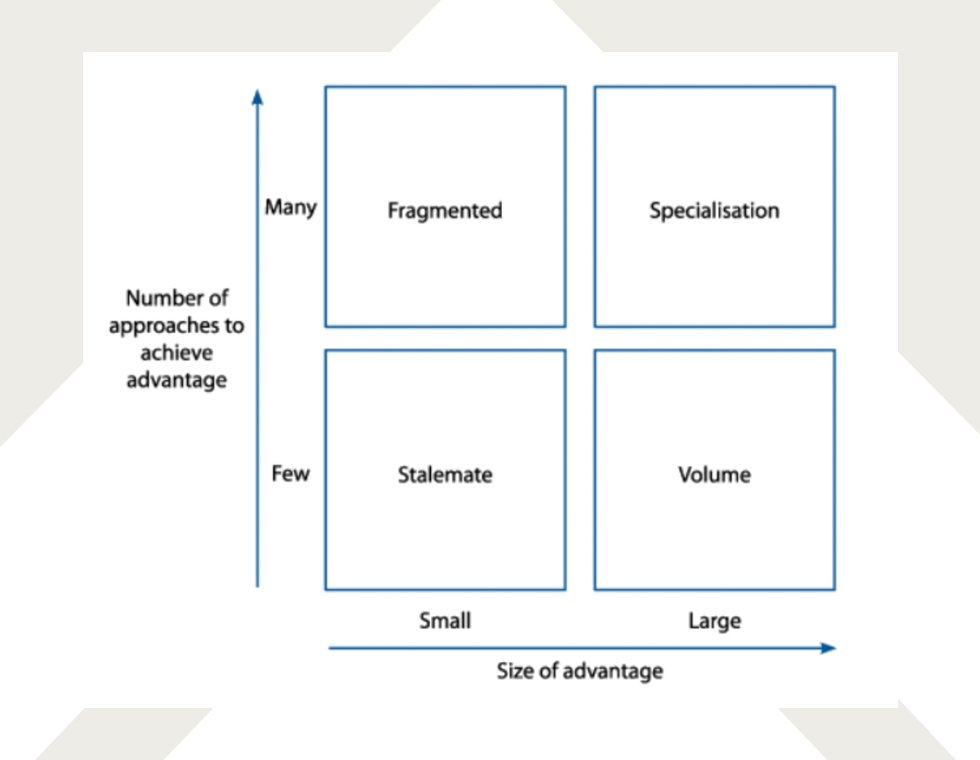
Strategic Frameworks BCG Advantages Model
The Advantage Matrix groups businesses into four categories and takes as its axes the two contrasting alternatives, economies of scale (size of advantage) against differentiation (# of approaches). It provides a good feel for the optimum strategy and the likely profits of the business, but it does not give any feel for cash flow which is a critical element to strategy development.
Volume
In this case there are considerable economies of scale, but few opportunities for differentiation. This is the classic situation in which organizations strive for economies of scale by becoming the volume, and hence cost, leader. Examples are volume cars and consumer electronics.
Stalemate
Here there is neither the opportunity for differentiation nor economies of scale; examples are textiles and shipbuilding. The main means of competition, therefore, has been reducing the `factor costs’ (mainly those of labor) by moving to locations where these costs are lower, even to different countries in the developing world.
Specialized
Specialized businesses gain benefits from both economies of scale and differentiation (often characterized by experience effects in their own, differentiated, segment); examples being branded foods and cosmetics. The main strategies are focus and segment leadership.
Fragmented
Fragmented businesses are ones that also gain benefit from differentiation, particularly in the services sector, but little from economies of scale; examples being restaurants and job-shop engineering. Competition may be minimized by innovative differentiation.